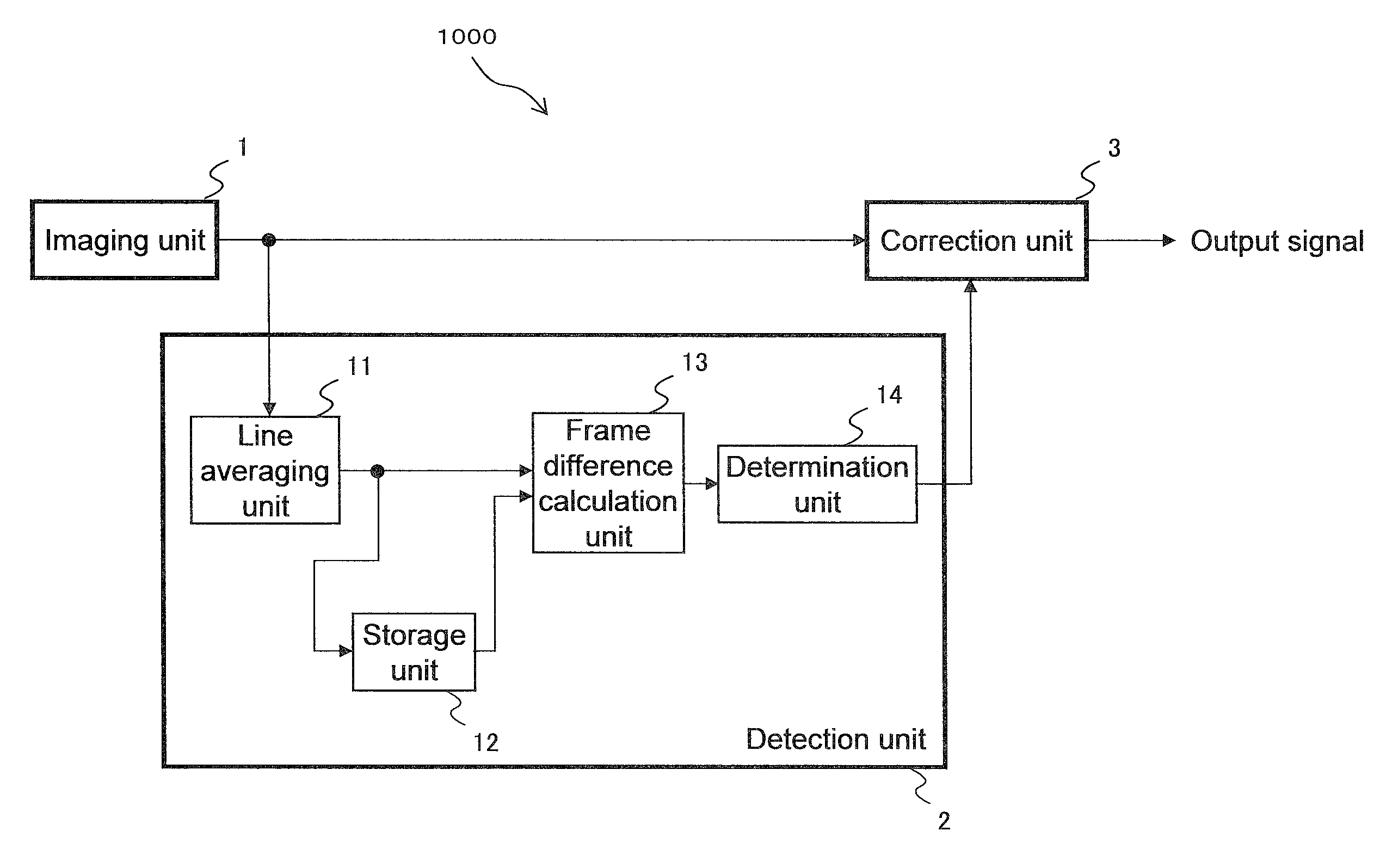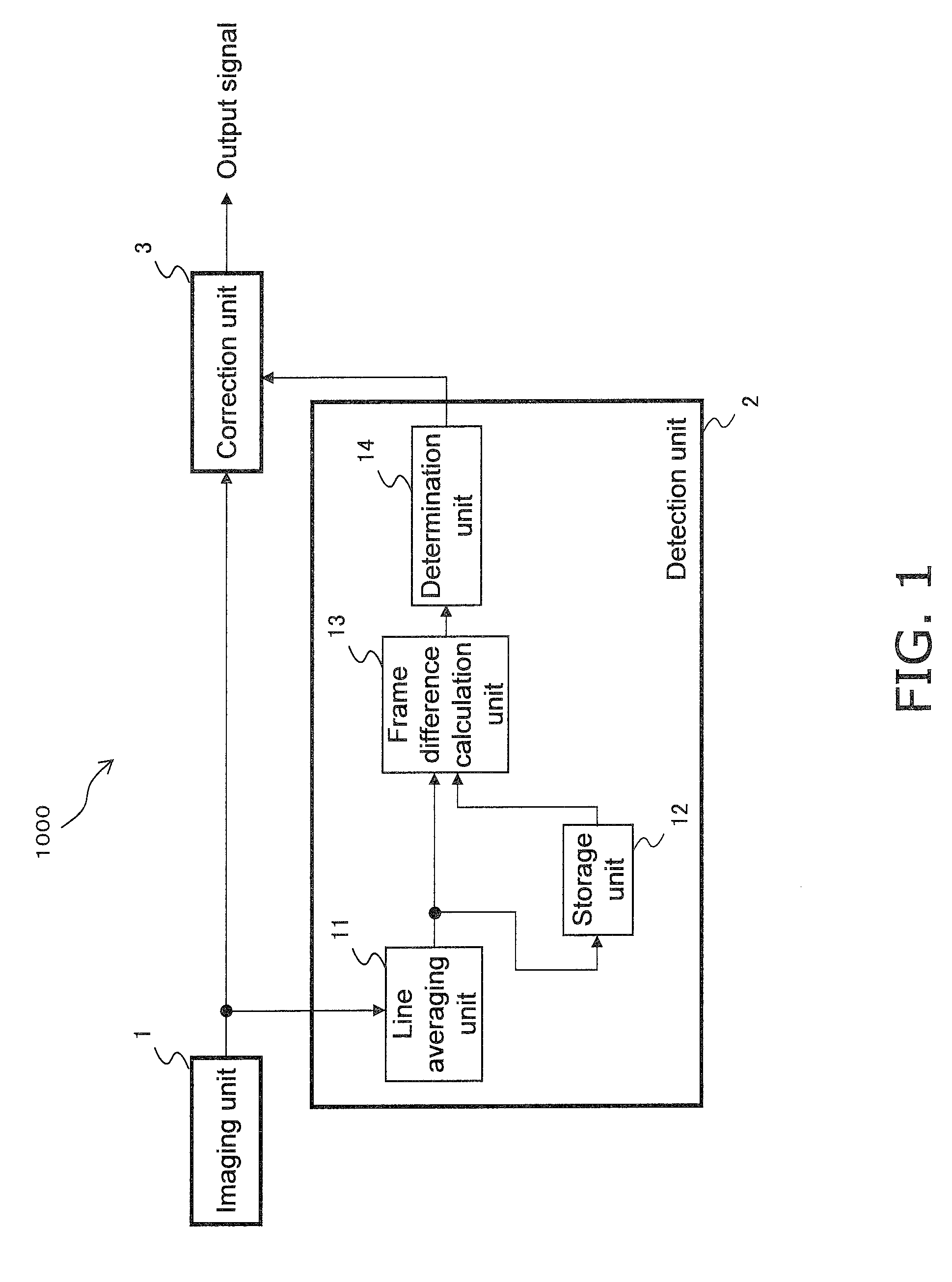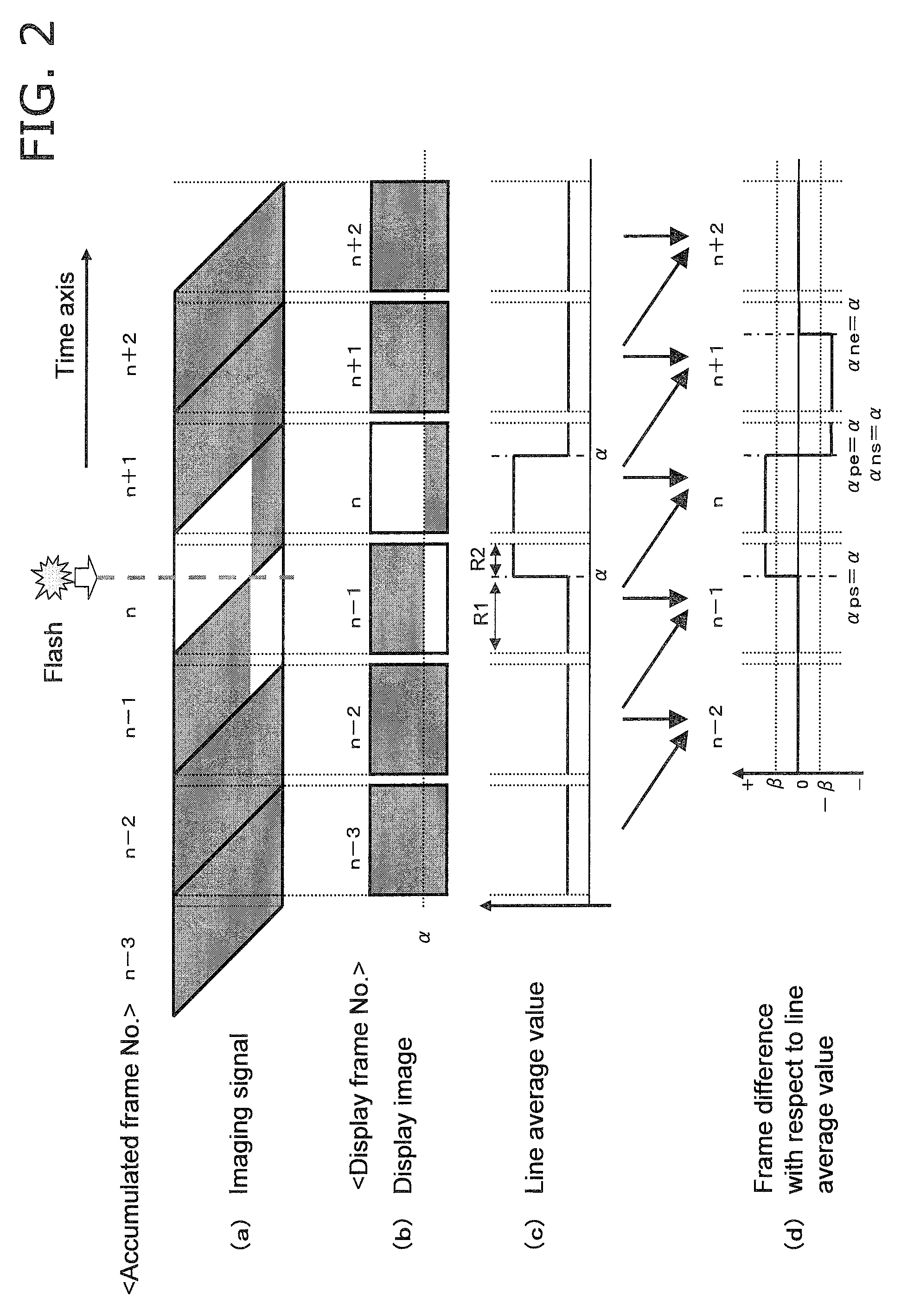Imaging device, external flash detection method, program, and integrated circuit
a flash detection and imaging device technology, applied in the field of imaging devices, can solve the problems of white band-shaped artifacts appearing in video, white band-shaped artifacts appearing in captured screens, etc., and achieve the effects of small circuit scale, increased circuit scale, and reliable determination
- Summary
- Abstract
- Description
- Claims
- Application Information
AI Technical Summary
Benefits of technology
Problems solved by technology
Method used
Image
Examples
first embodiment
[0217]
[0218]FIG. 1 is a diagram showing the schematic configuration of an imaging device 1000 of the first embodiment.
[0219]As shown in FIG. 1, the imaging device 1000 includes an imaging unit 1, a detection unit 2, and a correction unit 3.
[0220]The imaging unit 1 is constituted including an imaging element such as a CMOS image sensor, and the imaging unit 1 acquires an imaging signal (video signal) by capturing images of a subject, and outputs the acquired imaging signal (video signal) to the detection unit 2 and the correction unit 3. Note that captured images (frame images) are formed by the imaging signal. The captured video can then be displayed by a display device by causing the display device to display a plurality of frame images.
[0221]As shown in FIG. 1, the detection unit 2 includes a line averaging unit 11 (line luminance information calculation unit), a storage unit 12, a frame difference calculation unit 13, and a determination unit 14. The detection unit 2 receives an ...
second embodiment
[0300]Next is a description of a second embodiment with reference to FIGS. 6 to 15.
[0301]
[0302]FIG. 6 is a diagram showing the schematic configuration of an imaging device 2000 of the second embodiment.
[0303]As shown in FIG. 6, the imaging device 2000 includes an imaging unit 1, a detection unit 4, and a flash correction processing unit 5.
[0304]The imaging unit 1 is constituted including an imaging element such as a CMOS image sensor, and the imaging unit 1 acquires an imaging signal (video signal) by capturing images of a subject, and outputs the acquired imaging signal (video signal) to the detection unit 4 and the flash correction processing unit 5. Note that in the present embodiment, it is assumed that the exposure time per frame of the imaging unit 1 is substantially the same as one frame period, which is determined by the imaging frame rate. For example, if the imaging frame rate is 60 frames / sec, one frame period and the exposure time are 1 / 60 sec.
[0305]The detection unit 4 ...
third embodiment
[0402]Next is a description of a third embodiment.
[0403]The configuration of an imaging device of the third embodiment is similar to the configuration of the imaging device 2000 of the second embodiment.
[0404]The following describes the imaging device of the third embodiment with reference to FIGS. 6, 7, 11, 12, and 13.
[0405]The operations of the evaluation value storage unit 412 and the evaluation value comparison unit 413 of the present embodiment differ from those of the second embodiment with respect to the following points (1) and (2). Specifically:
[0406](1) Out of the generated evaluation values, the evaluation value storage unit 412 temporarily stores the evaluation value of the top line.
[0407](2) The evaluation value comparison unit 413 compares the evaluation value of the top line that is stored in the evaluation value storage unit 412 and the evaluation value of the bottom line that was generated by the evaluation value generation unit 411, determines whether the influence...
PUM
 Login to View More
Login to View More Abstract
Description
Claims
Application Information
 Login to View More
Login to View More - R&D
- Intellectual Property
- Life Sciences
- Materials
- Tech Scout
- Unparalleled Data Quality
- Higher Quality Content
- 60% Fewer Hallucinations
Browse by: Latest US Patents, China's latest patents, Technical Efficacy Thesaurus, Application Domain, Technology Topic, Popular Technical Reports.
© 2025 PatSnap. All rights reserved.Legal|Privacy policy|Modern Slavery Act Transparency Statement|Sitemap|About US| Contact US: help@patsnap.com



